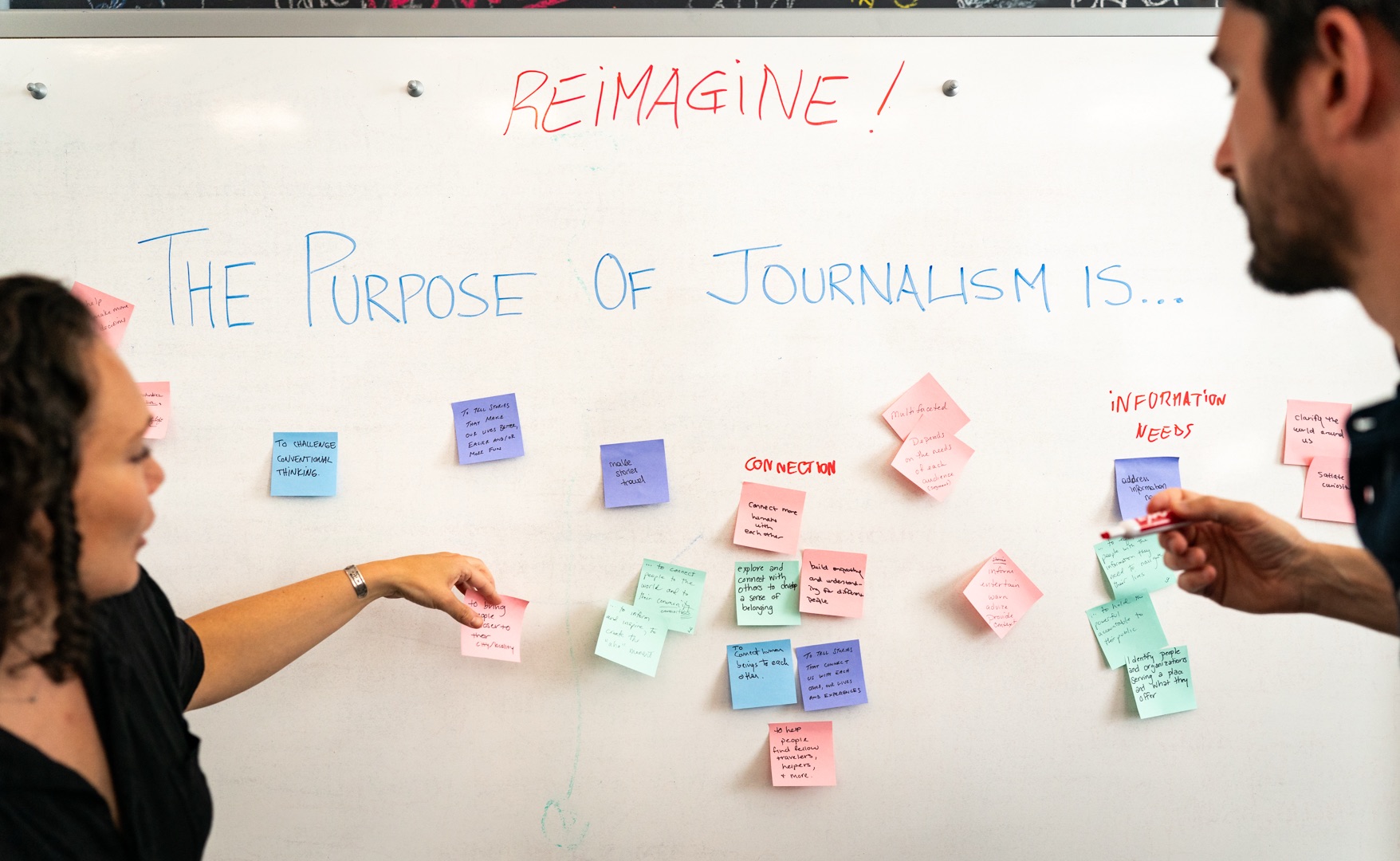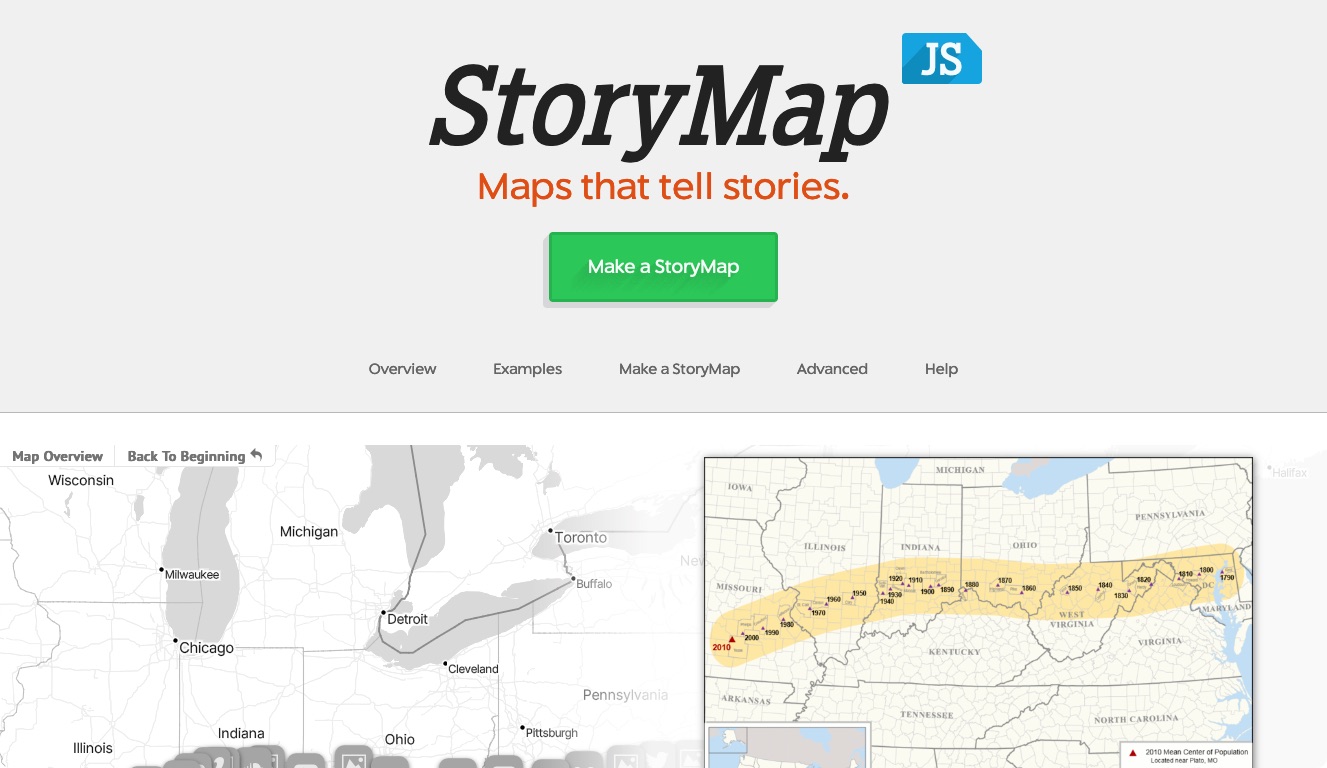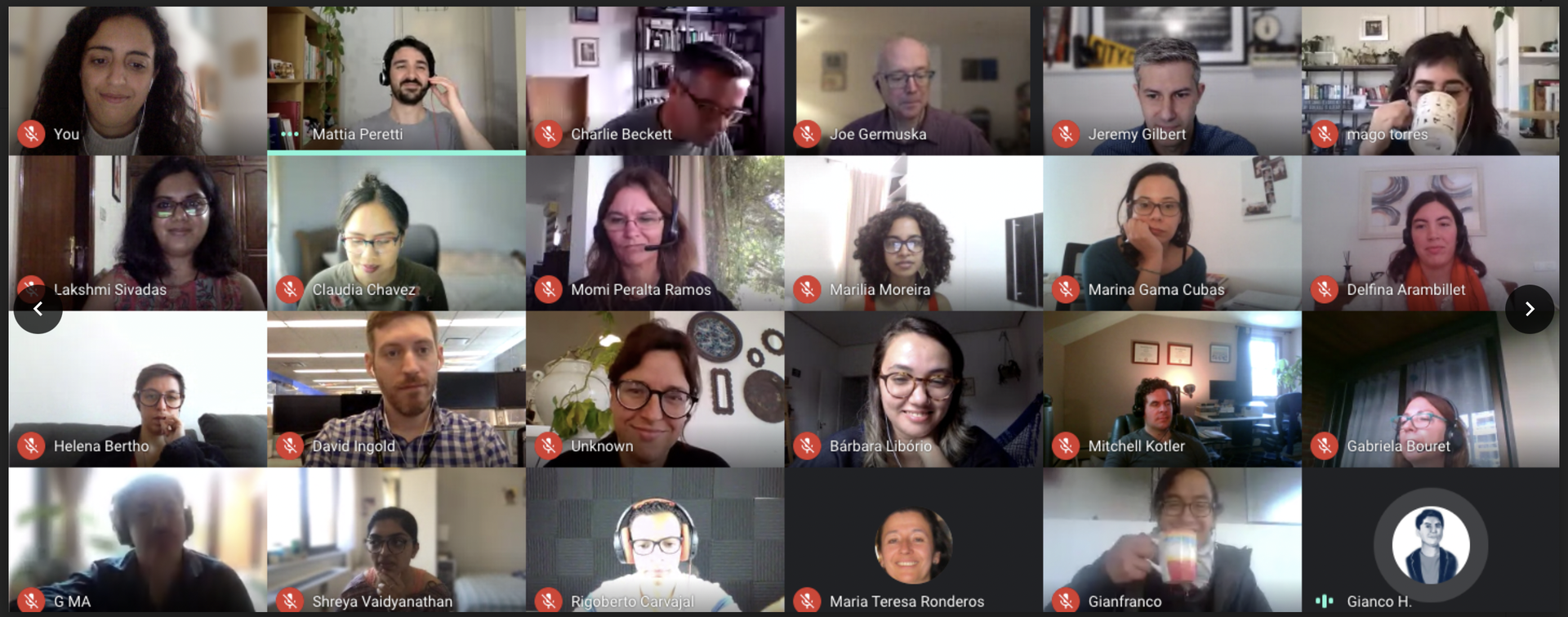Last month, we kidnapped the entire Knight Lab team on a road trip to Michigan to visit Menlo Innovations and take their popular course Project Management: The Menlo Way—or as we fondly to refer to the trip, forced family fun time. Normally a three-day workshop, Menlo arranged a one-day intensive course for our small group.
Located in large, open-floor-planned basement with concrete floors and a sizeable glass wall at the entrance, Menlo is unlike the “normal” office environment. They allow people to bring in their newborns as well as their pets and pair people in teams that are switched weekly. Upon first observation it seems like Menlo employees spend the majority of their time talking about what they are doing with their time, or planning how they will spend their time. At 10:30am every morning they break out into a daily scrum where the entire staff form a large circle and pass around a Viking hat, introducing themselves and what they are working on. Weekly there are smaller group meetings to decide on time and budget estimates for each piece of a project. And daily at 3:00pm, they take a walk around the block outside to escape from sitting in a basement all day.
Menlo has become a leader in innovative project management techniques and application of an Agile-like extreme programming method. This involves creating planning cards (time blocks of the weeks hours) with clients, and storycards (index cards with detailed tasks) with staff; they then assign time estimates to each storycard and attach it to a planning card. This method requires copious amounts of paper and we all couldn’t help hoping that Menlo recycles.
Our favorite part of the day was the hands-on learning; we had to manage a given project (creating a wedding website) using Menlo’s project management workflow. We were also given a persona map of people that would be using the site and what they would use it for, and a long list of features the site could have and the time estimates to make them. Our team then had to narrow those features down to plan out week one (Menlo’s planning card) to launch a first iteration—the simple functions the site needs to be out in the world—and then the two subsequent weeks before presenting a final product. This required us to come to a quick consensus on which features to cut altogether, and which order to tackle kept features for them to fit in the allotted 32 hour work week. Thus streamlining and hastening our decision processes.
By experiencing this workflow, we learned that while not everything Menlo does will apply to our needs, there are definitely some ideas that we want to begin applying. The first is creating persona maps upon entering a project, to better understand our core end-users and peripheral end-users. We are more about experimentation than product development for a paying client so while applying some of the time estimating may be useful from an efficiency standpoint it isn’t necessary to create a budget for a paying client that we don’t have.
We were also pretty enamored with the Work Authorization Board—a plan set up on the wall with team members atop the columns and the weekdays as the rows, where we can easily see what each person will be working on any given day. Currently, we implement a daily scrum that we find very helpful for communication and organization purposes, but visuals are always welcome. The Knight Lab team would like to create our own version of the Work Authorization Board, but also provide a digital representation of it for those of our team that are not always in the office.
Menlo has created this position titled High-Tech Anthropologist, which fascinated us, and left us wanting to learn more about their specific workflow and process. They are the team that studies the need for a product and also how end-users experience and interact with the product.
At the end of the day we took a quiz from the back of the book by Patrick Lencioni titled The Five Dysfunctions of a Team. It helped give us a perspective of our team’s cohesiveness and mental state. The book itself is more of a fictional case study, but the quiz and suggestions given in the back of the book are the most useful part. We then brainstormed how to improve our team in the five areas: absence of trust, fear of conflict, lack of commitment, avoidance of accountability, and inattention to results. This section was one of the most productive aspects of the day, and will improve our team dynamic and help us move forward together.
Though the Knight Lab’s Menlo road trip included fun happenings like breakfast for dinner, “Bohemian Rhapsody”, and the occasional bump in the road—literally, bad shocks—we found that Menlo provided us with just the team building and project management direction we required to keep experimenting and advancing media technology.
About the author





